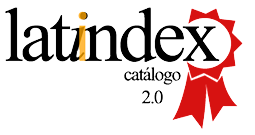El aprendizaje del idioma inglés con los recursos TIC: herramientas web 2.0 en estudiantes de la Universidad Especializada de las Américas
Palabras clave:
aprendizaje del idioma inglés, herramientas Web 2.0, percepción, recursos TIC, redes sociales y medios, TICResumen
La creciente integración de las tecnologías de la información y la comunicación (TIC) en el ámbito educativo implica investigar el cómo y en qué circunstancias estas herramientas apoyan a los estudiantes en el aprendizaje de un segundo idioma (López et al., 2018). Se hace necesario averiguar sobre los recursos TIC que utilizan frecuentemente los estudiantes en este aprendizaje. Así, este estudio tuvo como finalidad analizar los recursos TIC utilizados en el aprendizaje del idioma inglés por los estudiantes de la Universidad Especializada de las Américas (UDELAS), en las cuatro facultades ubicadas en su sede en la ciudad de Panamá. El estudio se realizó con un enfoque cuantitativo, no experimental y descriptivo. La encuesta se aplicó a 718 estudiantes (de un total 2645 estudiantes matriculados en las asignaturas de inglés en el segundo semestre de 2020). Algunos resultados relevantes fueron: 56% de los participantes cree que las herramientas Web 2.0 son pertinentes para aprender inglés y el 62% opina que son importantes para el aprendizaje de este idioma. Sin embargo, de 38% a 40% de los participantes expresaron como respuesta “no sé”, lo que indicaría que existe un empleo bastante incipiente de estas herramientas. Entre las redes sociales más empleadas en las clases, mostraron un claro predominio dos medios: YouTube, con 66% y Facebook con 18%. En cuanto a medios para manejo de videos y fotos, los tres principales fueron: WhatsApp (61%), Instagram (52%) y Pinterest (30%). Con referencia a medios noticiosos en inglés, el 65% optó por la opción de “ninguno”. Sin embargo, un 18% mira noticias de CNN y un 14% de la BBC. Desde la percepción de los participantes, los medios digitales les ayudan a mejorar aspectos básicos como ampliación de vocabulario y capacidad para interactuar en conversaciones o chat, e incluso para mejorar su escritura y empleo de la gramática.
Descargas
Citas
Alcántar, María & Alcántar, Carranza & Claudia, & Islas Torres, Claudia & Mónica, & Gómez, Lizbeth. (2018). Percepción de los estudiantes respecto del uso de las TIC y el aprendizaje del idioma inglés. 50-63. 10.18381/Ap. v10n2.1391.
Castro, A. (2019) Uso de las TIC en el aprendizaje del inglés de estudiantes del grado 4° del colegio de la universidad pontificia bolivariana [Título profesional, UNIVERSIDAD PONTIFICIA BOLIVARIANA]. Repositorio Académico de la UNIVERSIDAD PONTIFICIA BOLIVARIANA. https://repository.upb.edu.co/bitstream/handle/20.500.11912/4927/Uso%20tic%20aprendizaje%20ingl%c3%a9s%20estudiantes%20grado%204%c2%b0.pdf?sequence=1&isAllowed=y
Corrales, Kathleen. (2011). Construyendo un segundo idioma. El constructivismo y la enseñanza del L2. Zona próxima: revista del Instituto de Estudios Superiores en Educación, ISSN 1657-2416, N.º. 10, 2009, pags. 156-167.
Educación 2030. Declaración de Incheón y Marco de acción de la UNESCO, junto con UNICEF, el Banco Mundial, el UNFPA, el PNUD, ONU Mujeres y el ACNUR, 2015, mimeo.
Fundación Telefónica. (2018). Estudio sobre la inclusión de las TIC en los centros educativos de Aulas Fundación Telefónica. Madrid: OEI.
García-Galera, M. C., del-Hoyo-Hurtado, M., & Fernández-Muñoz, C. (2014). Engaged youth in Internet. The role of social networks in social active participation. Comunicar, 22(43), 35–43. https://doi.org/10.3916/c43-2014-03
Las TIC en la educación. (2021, June 1). UNESCO. https://es.unesco.org/themes/tic-educacion
Mazarío I. y Mazarío A. (2003) Monografía. El constructivismo. Paradigma de la escuela contemporánea Columbia. Editorial Mc Graw Hill. Editores. S.A.
Morales Capilla, M., Trujillo Torres, J. M., & Raso Sánchez, F. (2014). Percepciones acerca de la integración de las TIC en el proceso de enseñanza-aprendizaje de la universidad. Píxel-Bit, Revista de Medios y Educación, 46, 103–117. https://doi.org/10.12795/pixelbit.2015.i46.07
O'Donoghue, Jennifer. (2015). El derecho de aprender con y en inglés. Mexicanos Primero. Solo la educación de calidad cambia México. Recuperado de http://www.mexicanosprimero.org/index.php/educacion-en-mexico/nuestra-opinion/item/el-derecho-a-aprender-con-y-en-ingles.
Sánchez-Antolín, Pablo. (2016). Nuevos retos en tecnología educativa. MULTIárea. Revista de didáctica. 183. 10.18239/mard. v0i7.924.
Tena Cortés, Hernán Augusto. (2017). Las TIC como herramientas de apoyo para la motivación del aprendizaje de inglés como lengua extranjera. Pereira: Universidad Nacional Abierta y a Distancia UNAD. Recuperado de http://repository.unad.edu.co/handle/10596/12300.
Vallejos Mamani, E. B. (2011). El impacto de la implementación de las TIC en la Evaluación del Desempeño Laboral del docente universitario: Estudio de casos del uso de PAIDEIA por los docentes de la FGAD-PUCP. Lima
Descargas
Publicado
Cómo citar
Número
Sección
Licencia
Derechos de autor 2024 REDES

Esta obra está bajo una licencia internacional Creative Commons Atribución-NoComercial-CompartirIgual 4.0.







